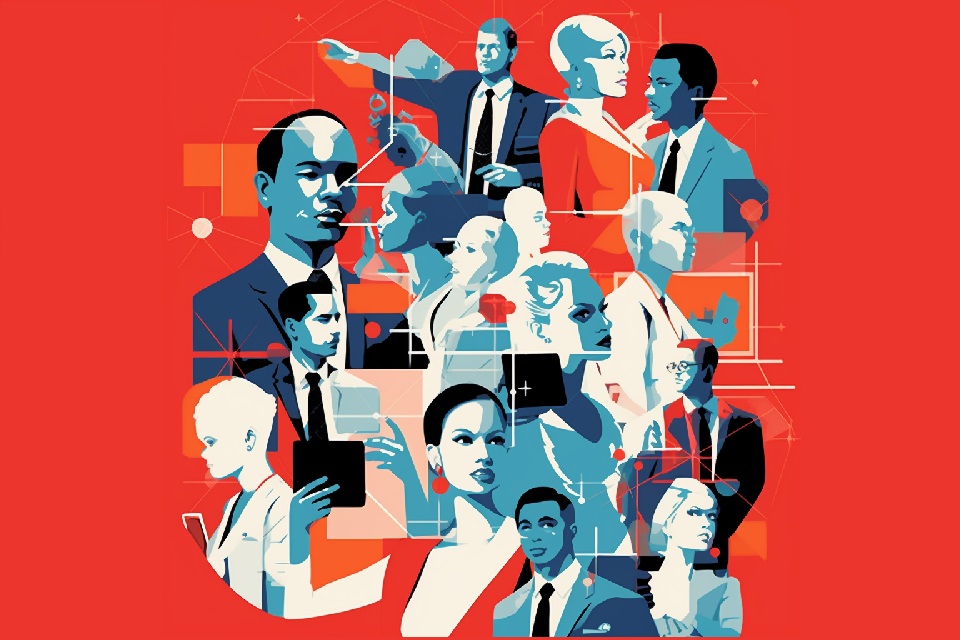New Work also needs aptitude diagnostics
Aptitude diagnostics – a professional tool for determining required competences
In New Work companies, pretty much everything is being questioned. Even recruiting! There is talk of agile personnel selection and terms like peer recruiting are used. In principle, I think these considerations are good. However, in my opinion, they are often not thought through to the end. I have learned that personnel selection is a management task. The involvement of the team consisted at most of a meeting after the official procedure to get to know each other and perhaps to ask for opinions. I think the approach of involving teams more in recruiting is good. It is only important to me that they are accompanied and given the appropriate tools.
Peer recruiting needs professional guidance
Why accompaniment? You may ask why it is so important to accompany the team when New Work is also about self-organisation. Yes, that is true. That’s why peer recruiting is basically a good approach, because it involves the team in the recruiting process. And that includes
- the creation of a job profile,
- participation in the selection process and
- also having a say in the decision on who should be hired.
However, recruitment requires a certain expertise. It is about using appropriate methods to make a prediction about a candidate’s professional performance. This methodology must be known and mastered. If this methodology is not used, the most suitable person may not be recruited. The most suitable person may even be turned down because you simply don’t notice when he or she is sitting in front of you. It is important to minimise this risk by acting professionally.
If someone is not trained, he/she will choose new colleagues mainly on the basis of sympathy, pseudo-criteria¹ or on the basis that he/she does not feel that his/her competence and place in the company are at risk. That is very humane, but not conducive to putting together a well-functioning and professionally strong team.
However, I don’t believe in training all teams as well as a recruiter is trained. Teams have to perform professional tasks for which they were hired in this company. To make them professional recruiters on top of that is going too far. Therefore, my clear recommendation: Teams should be accompanied by a recruiter who
- is aware of the stumbling blocks in the recruiting process,
- ensures a professional approach and
- accompanies and reflects on the decision-making process.
Aptitude diagnostics is a professional tool – also for New Work
And what tools do you need now? I am a big fan of the DIN standard DIN 33430:2016-07 Requirements for job-related aptitude diagnostics.² Essentially, aptitude diagnostics is about considering in advance which competences the future colleague should have? How exactly do we define them and how do we recognise them? How can we ask them in an interview?
Example: The candidate should be a team player. The ability to work in a team means, among other things, to share information with colleagues on one’s own initiative. (You can define yourself what teamwork means to you.) Once the definition is made, the behavioural triangle questioning technique can be used.
Example: Describe a situation in which you last worked successfully together in a team?
Candidate tells.
We ask what the candidate did in concrete terms. How did he/she behave in the situation?
Candidate tells.
We ask what the result of this successful cooperation was.
Candidate tells.
Sounds simple, doesn’t it? And it is. However, I have presented this in a very abbreviated way and I always find that it is difficult to consistently follow this approach in an interview. Especially if you don’t interview that often because it’s not one of your core tasks. And that brings us back to the accompaniment described earlier!
Hiring for attitude
I often see and hear that companies dealing with new work and agility pay a lot of attention to the mindset of the candidate in addition to the professional requirements. The approach goes back to the book by Mark Murphy “Hiring for Attitude: A Revolutionary Approach to Recruiting and Selecting People with Both Tremendous Skills and Superb Attitude”, which was published in 2016.
I want to distance myself from the idea that there is a right or wrong mindset. However, it is undisputed that the new colleague should have a suitable inner attitude and be culturally harmonious with the team and the company. This is more important than a professional qualification, as this can often be retrained.
I often hear that you can’t see into the candidate’s head and only find out about the fit with the team and the company during the probationary period. In my experience, the same approach as in the teamwork example can be used here. The point is to make explicit what it means exactly when someone has the right mindset and how we recognise this in everyday work.
In the classic way, we have to create a qualification profile that fits the company in general, but also the position to be filled in particular. Behaviours that I think are helpful in the new world of work and that could be tested in job interviews are:
- Is active in networks and uses them to advance his or her issues.
- Is on a continuous learning journey and therefore invests time in learning in a self-directed way.
- Is willing to let go and adapt to circumstances and respond accordingly.
- Is willing to try new things, even at the risk of failure.
- Is able to empathise with his clients and takes their needs seriously.
- Thinks holistically and across silos, trying to leverage as much potential as possible.
- Lives values such as transparency, trust, commitment, focus, courage, openness, respect.
- Live teamwork and cooperation.
Of course, these would still have to be concretised, e.g. for the first point:
- When solving a problem, asked his network for support and incorporated the knowledge gained from this into his work. This may have happened in offline networks or in online networks such as Xing, LinkedIn or Twitter.
The question we could use to enter the topic could be as follows:
- Tell me how you last went about solving a complex problem?
But aptitude diagnostics is so Old Work
Yes, aptitude diagnostics dates back to the 70s. But Frithjof Bergmann also developed his New Work concept in the 70s, right?
I’m a big fan of questioning everything. I am convinced that our working world is in urgent need of change and that we should leave some things behind. In my view, however, aptitude diagnostics stands for exactly the human-centredness that New Work propagates.
Aptitude diagnostics helps to get to know the new colleague better and to make a good decision. It creates more diversity because it helps us to look beyond our own experiences. It ensures that the most competent people are where they should be and that can only be beneficial for our social and corporate transformation, can’t it?
Notes (some in German):
If you like the post or want to discuss it, feel free to share it with your network.
[1] One pseudo-criterion, for example, is that many people believe that people who play a team sport or do voluntary work are team players and socially competent. However, such a causal relationship does not apply.
[2] DIN standard DIN 33430:2016-07 Requirements for job-related aptitude diagnostics
[3] Hiring for Attitude
Katharina Nolden has published more articles in the t2informatik Blog, including:

Katharina Nolden
Katharina Nolden is a graduate pedagogue, business coach (IHK) and scrum master (scrum.org). She has several years of experience in management consultancy and in the education, energy, service and health industries. She is currently employed as an organisational consultant and coach at QUBIC Beratung und Coaching GmbH & Co. KG. She advises on the topics of: targeted and professional personnel selection, diverse and varied career development and new learning with innovative formats.
In the t2informatik Blog, we publish articles for people in organisations. For these people, we develop and modernise software. Pragmatic. ✔️ Personal. ✔️ Professional. ✔️ Click here to find out more.


